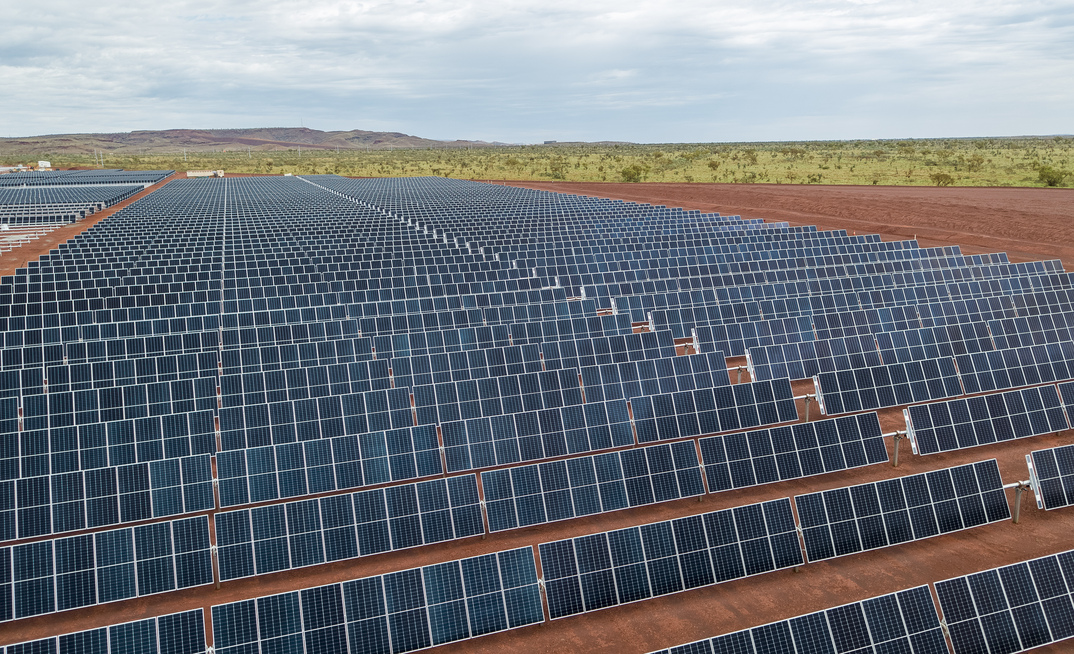Mining's low-carbon electricity ‘blackspots' have been revealed in new research by Mining Journal Intelligence (MJI).
Mining companies are increasingly switching to low-carbon power to help them achieve ambitious carbon reduction targets, with most larger producers committed to net zero emissions by 2050 or sooner.
But a lack of availability of low-carbon or renewable energy poses a major obstacle to meeting these commitments in many parts of the globe, with the problem most extreme in parts of Africa, South America, Oceania and the Middle East.
The findings are revealed in MJI's recently published World Risk Report 2023 featuring MineHutte ratings, which this year incorporated ‘Access to low-carbon electricity' as an 11th metric evaluated in risk scores for 121 jurisdictions globally.
As an energy-intensive sector, mining companies that are unable to secure low-carbon energy sources will be hampered in their efforts to cut carbon emissions, which could in turn undermine their ability to pull in investment, with some investors demanding progress on this front.
The Access to low-carbon electricity metric is assessed using environmental sustainability scores from the World Energy Council's (WEC) Trilemma index - which measures progress in the transition toward less environmentally harmful energy systems - and results of MJI's World Risk Survey 2023, which received more than 600 responses. The Trilemma data make up 80% of total risk scores in the metric, with survey results weighted at 20%.
‘Blackspots'
Sierra Leone and Burkina Faso were the weakest-scoring jurisdictions globally on the Access to low-carbon electricity metric, with scores of 20 and 27, respectively.
In total, nine jurisdictions scored less than 40 - putting them in the extremely high-risk D rating category. These included Venezuela, Guyana, and Yemen, on 30, followed by Papua New Guinea (32), Mali (35), Solomon Islands (36), and Eritrea (37).
However, scores for all nine were based solely on World Risk Survey ratings, as WEC data on them was not available. Mongolia, Mauritania and Nigeria were the next lowest-performing jurisdictions, scoring 42, 43, and 47 (based on both WEC scores and survey results).
Top performers
Two African nations, Uganda and Rwanda, topped the table for access to low-carbon electricity, scoring 100 and 90, respectively (both were based only on survey results, however, as WEC scores were not given).
Uganda's electricity generating capacity is about 92% renewable, based mainly on hydropower (80%), sugar cane bagasse-fired plants (8%), and solar plants (4.5%), according to a report by the International Energy Agency in November.
The country has more than quadrupled generating capacity over 21 years to 1346MW at the start of 2023, and now produces a significant surplus relative to peak demand of about 800MW, the report added.
More than half of Rwanda's electricity is produced by hydropower.
Ten jurisdictions scored more than 80, putting them in the negligible risk AAA rating category in the Access to low-carbon electricity metric. Five were European countries (France, Sweden, Austria, Finland, and the UK), along with Costa Rica, Uruguay, and Brazil.
Regional trends
On a regional basis, Canada was the top performer on Access to low-carbon electricity, with a score of 74 (A rating). All 12 Canadian provinces assessed scored in 67-79 points range. Canada was closely followed by Europe/former Soviet Union (73) and Central America/Caribbean, on 72.
The US averaged 66, followed by South America (63) and Australia/Oceania (61).
The worst scoring regions were the Middle East, on 54, Africa, on 56, and Asia, on 59. The global average was 64, or a BB rating (lower moderate risk).
Carbon cuts
Mining companies are increasingly looking to expand their use of green energy to cut carbon emissions, both through investing in site-level renewable power plants and purchasing renewable electricity from suppliers, Christian Spano, director of innovation at the International Council on Mining and Metals (ICMM), told Mining Journal Intelligence.
"The production of minerals and metals is energy intensive and so companies are increasingly using renewable energy to power their operations to enable them to reduce emissions," he added.
But local conditions can prove a barrier to further take-up of low-carbon power.
"Renewable energy is becoming more and more accessible and cost-effective. However, this can vastly differ between different regions based on the available natural resources and infrastructure to transport it, as well as government policies that can either incentivise or provide a barrier to investment," Spano added.
But in other jurisdictions there is an increasing business case for renewable power projects, coupled with political support.
"In a key mining jurisdiction such as Chile, power from new hydro, wind and solar plants is actually cheaper than fossil fuels, and renewable energy is widely supported politically, including by promoting private-public partnership models and a focus on developing innovative green technologies," Spano added.
"It is expected that 90% of mines operating in this country will have at least some renewable energy option installed by 2025."
Chile ranked 31st out of 121 jurisdictions on the Access to low-carbon electricity metric, with a score of 72, or an A rating.
Risk trends
The World Risk Report 2023 showed overall mining investment risk hit a seven-year high globally in 2023, with mining companies and investors affected by rising legal and regulatory headwinds.
The report evaluates risks over 11 ‘Hard risk' metrics, from risk-related data, including MineHutte's regulatory risk ratings, which measure risks inherent in mining-related legislation, and across five categories - Legal, Governance, Social, Fiscal, and Infrastructure.
Canada and the US remained the lowest-risk mining regions in 2023, with average regional IRI scores of 73, or A ratings (low risk). Asia and Africa were the highest-risk regions, averaging 48, or CC (high risk).
The World Risk Report 2023 featuring MineHutte Ratings is available for purchase as an e-reader report here and can be accessed for free by Premium subscribers.
Key findings of the report will be discussed in a free webinar, World Risk Report 2023: Troubling times for mining?, on November 29 at 3pm UK time. To register click here.


























